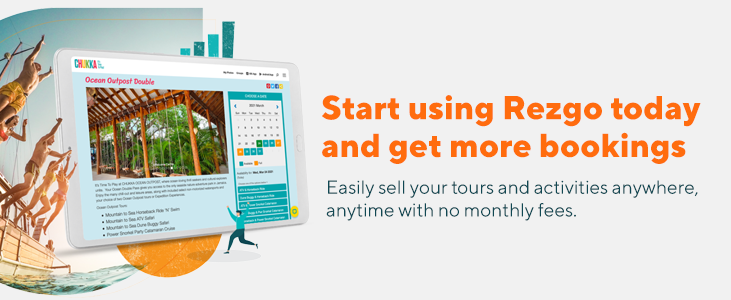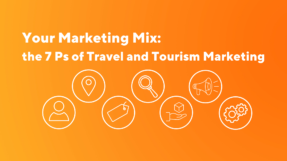
The Engagement phase is the second phase of the four step L.E.A.D. social media strategy and is the first step in connecting and conversing with your potential customers, partners, and vendors. The Engagement phase is all about joining into an existing conversation rather than starting your own conversation. During this step you are beginning to participate in discussions that are already happening on the sites that you discover during the listening phase and engaging with your audience.
The goal of the engagement phase is to begin building your reputation as an expert in what you do. The key here is to prove you are knowledgeable without being perceived as a salesperson. You are, in essence, proving that you walk the walk. If you are a guided tour operator in Amsterdam, that may mean providing insider tips that no one else can provide, or if you are a mountain biking operator it might be information about tuning your bike for certain conditions.
You may comment on a post or a question and provide insight into your particular destination or activity without outwardly promoting your brand. Remember, the idea here is to build credibility in your experience. As more people recognize your name and brand and associate it with the activity, the more trust you build with readers.
Remember these important engagement rules:
- Respond quickly (once a day is fine).
- Always respond as yourself and NOT your brand. Why? Because people prefer to connect with people rather than faceless companies (no matter how small).
- Always be polite and professional.
- Do not oversell or over promise in your responses.
- Take sales questions off-line or into another channel. A good approach for example would be “I’d be happy to talk to you about that. Please send your contact information to me at me{at}mycompany[dot]com and we can talk offline”.
- When commenting on posts, try to always be positive or constructively critical. Negative rants will undoubtedly leave a negative impression of you regardless of the context. Remember that you always want your brand and the experience to be associated with positive statements rather than negative ones. People (for the most part) like to do business with positive people and companies.
What’s the point of engaging?
Your objective with the Engagement phase is to be seen at the party. For example, when you go to a social gathering or a party you start by walking around and listening to conversations or looking for people that you know. When you find someone or hear something that interests you, you generally wait and listen some more finding an appropriate time to introduce yourself and become part of the conversation. That moment that you introduce yourself is the Engagement phase. In social media it is identified by you leaving comments on blog sites or social networking site that relate to your business or area of interest. When you leave comments, for example, most sites will allow you to add a link back to your website. Instead of just using your generic home page address, consider linking to a profile page on your website that has more information about you and your role with the business. Be aware though, that your goal should not be to build link backs to your site. Many SEO “experts” or services will post comments on behalf of their clients just to build link backs. The results in this case are obviously flawed and will often get your IP address banned from commenting in the future. Focus on providing useful and relevant content that is keenly targeted at what you do or where your business is located.
Here is a practical example of proper engagement strategy. Assume that these comments are for a blog post describing someone’s experience:
An example of a less effective comment:
“I love your post, it so interesting. I will come back often to read more.”
Why is this post ineffective?
- The grammar is poor. You would be surprised how many of these comments are floating around blogs and social networks posted by SEO companies.
- It has no relevance to the subject of the post and is generic.
- The commenter made no effort to engage with the writer or with other potential readers.
An example of an effective comment:
“I’ve lived and worked in [location] for many years and being close to [location] I can absolutely agree that [location] is an amazing place to visit. There are so many cool things to do in and around [location] including horseback riding, some great hiking, skiing in the winter, rafting in the summer, and a whole host of other activities. Thanks for the great post, it was so nice to read someone else’s perspective.”
This comment is much more effective because:
- It relates to the subject matter of the post. It mentioned the location and the fact that you live and work in the area.
- It adds value to the post by confirming that what the writer has written is true.
- It contains lots of keywords relating to what you do and your business (ie. [location], Activities, things to do)
- By acknowledging and thanking the author, you open the door to reciprocating in the future once you start contributing content in the future.
A Special Note about negative comments and reviews
At some point every business faces the possibility of negative reviews or comments. Whether this is on your blog or on a third party site like TripAdvisor, how you respond to the comment is almost as, if not more important than the negative review itself. Don’t get too worried about it, it’s a lot like the first ding in your new car, eventually it will happen so just accept it when it does, deal with it, and move on. Approach negative reviews and comments with a positive attitude and with the right frame of mind. In other words, before blaming yourself or the customer, look at it as an opportunity to re-engage with someone who has take the time to point out a problem and take steps to correct it. If you ask yourself the following question, you will most likely handle the situation in a more positive way:
How would I deal with this customer if they were standing in front of me?





